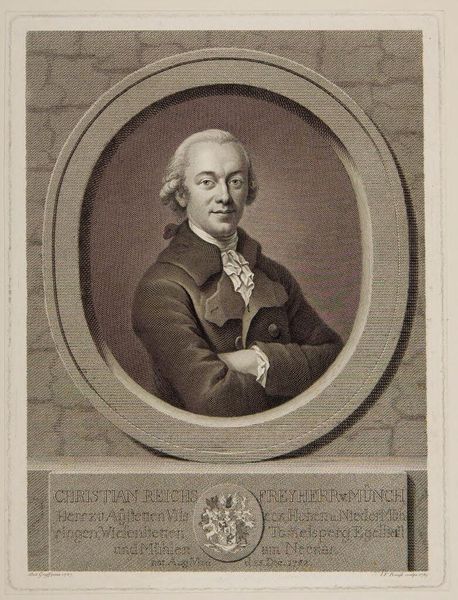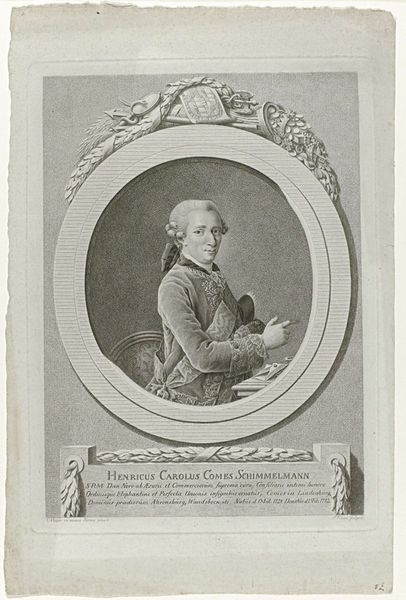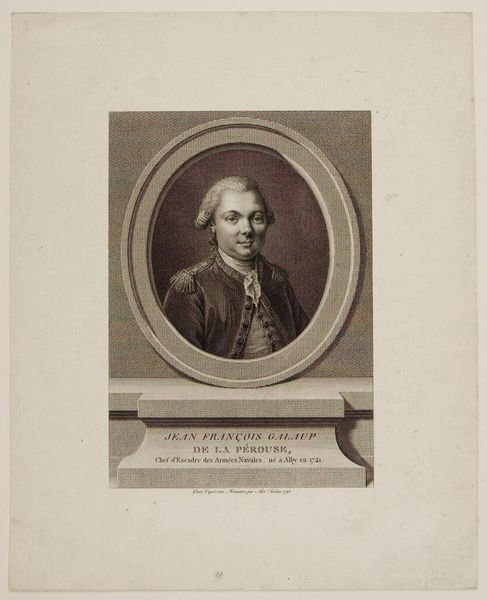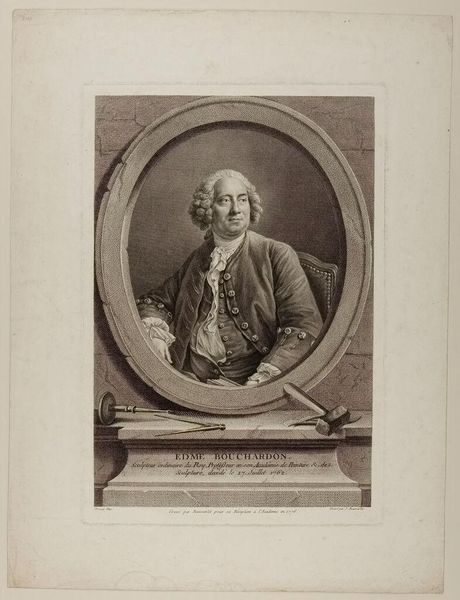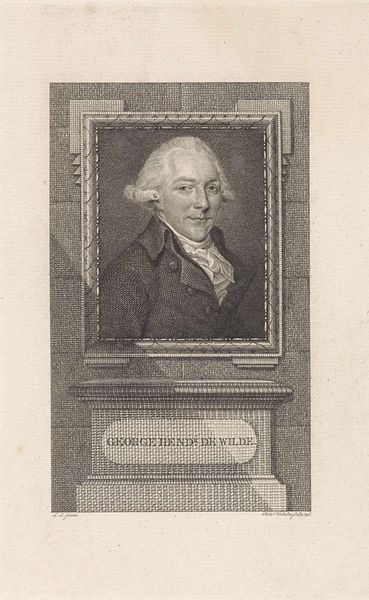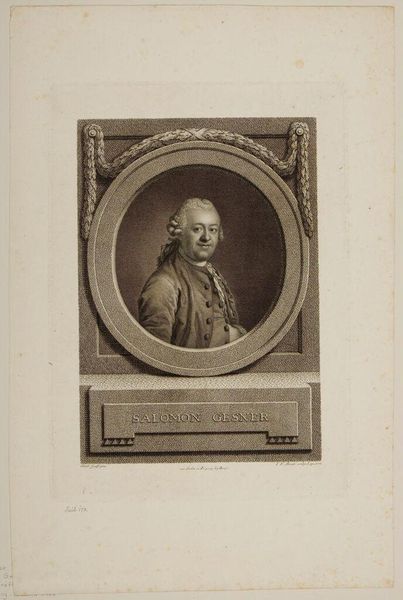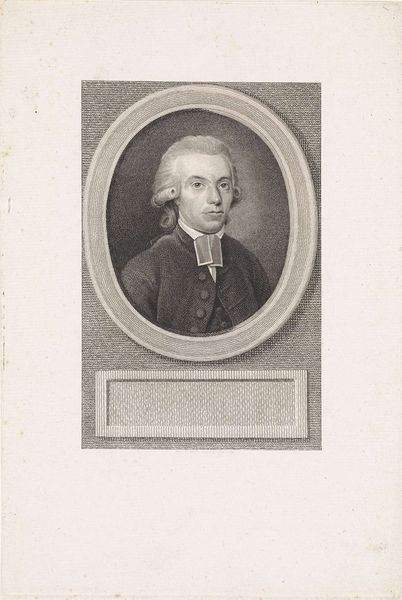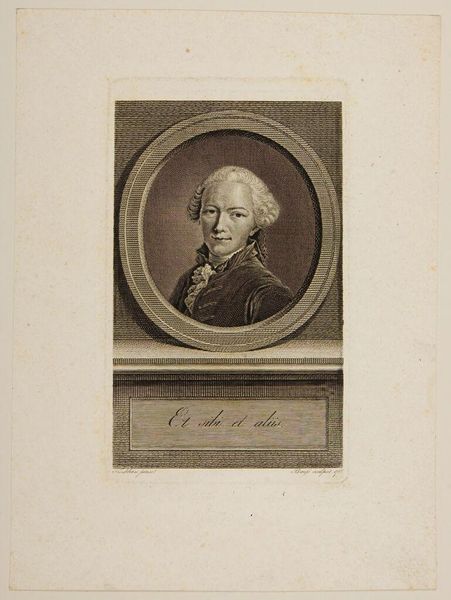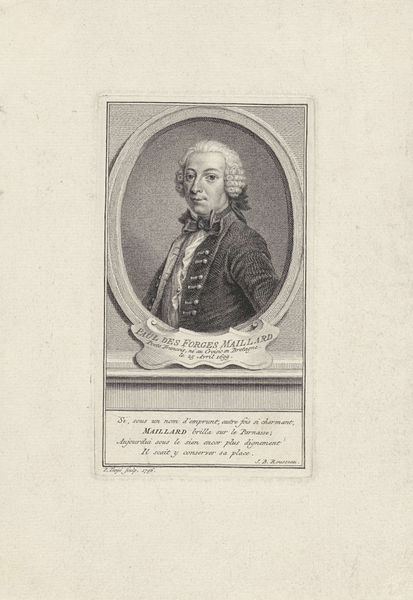
Copyright: CC0 1.0
Curator: Looking at this portrait, I am struck by the serene, almost stoic, expression on the subject’s face, framed so elegantly within the laurel wreath. Editor: It’s a remarkably detailed print. What can you tell us about the materials and creation of this likeness of Heinrich Friedrich Innocent Apel by Johann Friedrich Bause? Curator: We believe it’s an engraving. Bause, who lived from 1738 to 1814, captured the essence of civic duty, given Apel's title, "Civ. Lips. Consul." The laurel, of course, signifies honor and victory. Editor: I find it compelling how the precision of the engraving lends itself to conveying status. The very act of creating this portrait, the labor involved in such intricate work, speaks to Apel's importance in his community. Curator: Indeed. These symbols reinforce ideas of civic virtue and enduring legacy, subtly shaping our perception of Apel as a figure worthy of respect and remembrance. Editor: The process transforms him, through ink and paper, into a symbol of authority, doesn't it? It makes one consider the role of printmaking in building and reinforcing social structures. Curator: Precisely. It's a testament to how symbols and materials intertwine to shape cultural memory. Editor: Seeing this artwork has really given me something to think about.
Comments
No comments
Be the first to comment and join the conversation on the ultimate creative platform.

